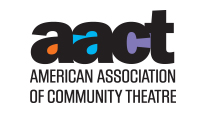Theatre Terms
 As a service to the theatre community, AACT provides over 1000 definitions of theatrical terms. Fully searchable, our glossary is helpful for technical staff, directors, actors, producers, or anyone wanting to better understand the inner workings of theatre.
As a service to the theatre community, AACT provides over 1000 definitions of theatrical terms. Fully searchable, our glossary is helpful for technical staff, directors, actors, producers, or anyone wanting to better understand the inner workings of theatre.
HOW TO SEARCH:
Click on a letter (A-Z) below to find terms beginning with the specified letter, OR enter a word in "Search for Term" OR search by entering a word in "Words in Definition." For example, entering the word "curtain" would display all words whose definition includes that word. (Note: If the A-Z or word search has been activated, it must be reset before using "Search for Term" or "Words in Definition." To reset the A-Z search: Click Here)
| Term | Definition | Link |
|---|---|---|
| PIN HINGE | Hinge with removable pin used to join two pieces of scenery together (i.e. one half of the hinge is on each piece of scenery). | |
| PIN SPOT | A instrument focused very tightly on a small area (e.g. an actor's head) 2) A luminaire used widely in disco installations, consisting of a low voltage Par 36 lamp with a fine beam in a metal case with built in transformer. | |
| PINK NOISE | Random sounding audio noise containing all frequencies in the audio spectrum tuned to the response of the human ear. Used with a Spectrum Analyzer to set equalization equipment for a large PA installation. However, the human ear is still a better judge of how a system sounds. | White Noise |
| PIPE | ||
| PIPES | The bars on which scenery and instruments are flown. | |
| PIT | Short for "orchestra pit." The area housing the orchestra. Originally, a lower section between the front of the stage and the audience, although now describes any area around the stage housing the musicians. | |
| PITCH | In acting, the height to which a voice is raised in tone. Also, to raise or lower the voice, not in volume, but according to the musical scale. | |
| PLACES! | A call to the actors to take their positions on, or just off the stage, as needed for the opening curtain. | |
| PLAN | A scale drawing showing a piece of scenery, lighting layout etc from above. Lighting plans are usually drawn onto the theatre's groundplan. | |
| PLAY | 1) A dramatic composition that tells story by means of dialogue, for an audience. 2) To act, act the role of, perform in. 3) Said of a script that is actable, or that is well received, as in "It played well." | |
| PLAYBACK | 1) The part of a computerized lighting control desk which enables the operator to recall cues from the electronic memory. 2) The results of a recording session. | |
| PLAYBILL or PLAY-BILL | A theatrical program. At one time, programs and posters were printed on a single sheet of paper (in the case of a program, on both sides). Such a printed sheet was called a "bill." | |
| PLAYWRIGHT | A person who writes plays. Note that the word ends with "wright," not "write." "Wright" means "a maker or fashioner of," as in "millwright," "shipwright," "wheelwright." | |
| Playwrite | Incorrect spelling for playwright (which see). | Playwright |
| PLOT | 1) A succession of unfolding dramatic situations. 2) List of preparations and actions required of technical crews during the performance (e.g. Sound Plot = list of sound cues and levels in running order.) The term also refers to a plan. (e.g. Light Plot = scale plan showing lighting instruments) | |
| Plot Device | A plot device is any technique in a narrative used to move the plot forward. A clichéd or poorly-conceived plot device may annoy an audience member, and a contrived or arbitrary device may confuse them. However, a well-crafted plot device, or one that emerges naturally from the setting or characters of the story, may be entirely accepted, or may even be unnoticed by the audience. | MacGuffin |
| PLOT LINE | Dialogue essential to the unfolding of the plot of a dramatic piece. | |
| PLY | Short for plywood. | |
| POINT CUE | A cue inserted during/after plotting between two existing cues. (e.g. 8.5 is inserted between cues 8 and 9 and cues by the stage manager as 8A). Most computer lighting desks have the ability to either insert an additional cue in a sequence, or to link to another cue out of the sequence, and then link back again. Inserting cues into a plotted sequence on a manual lighting desk is more awkward, because it is a running plot (where only the changes between cues are noted down). | |
| POINT UP | To stress certain lines, movements, or gestures, by directing the attention of the audience to something of dramatic importance, as in order to create suspense. |




